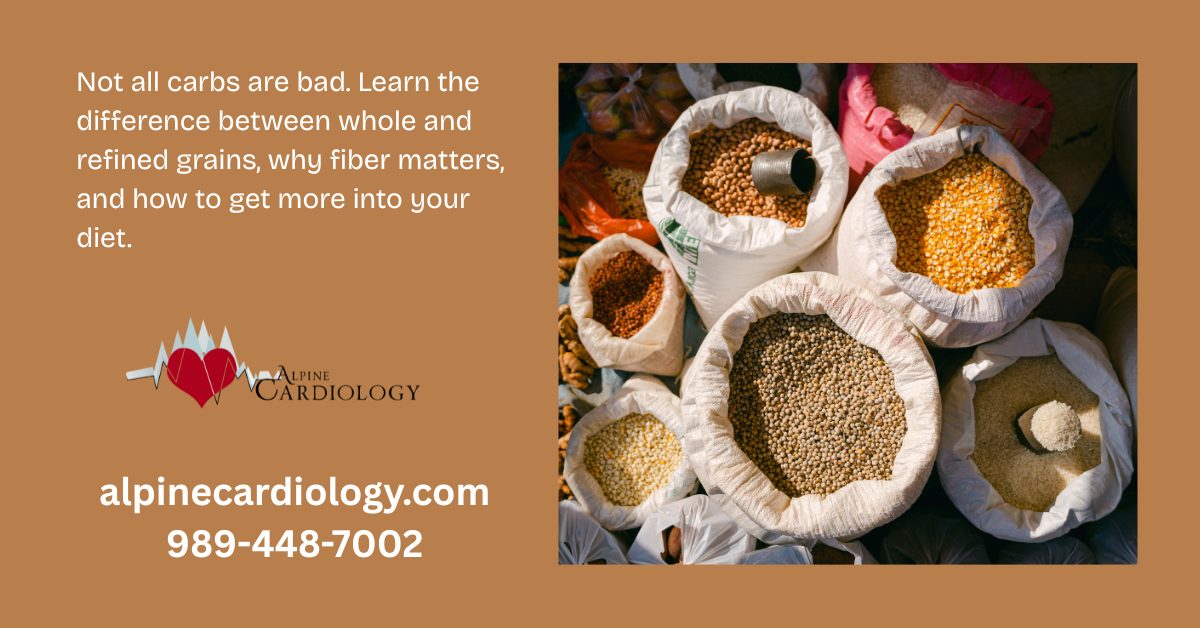What You Really Need to Know
Carbs get a bad rap these days—between gluten-free trends and low-carb diets, it can feel like bread and pasta are the enemy. But the truth is, not all grains are created equal. Knowing the difference between whole grains and refined grains (and why fiber is your friend) can help you make better choices without giving up your comfort foods.
Whole Grains vs. Refined Grains
Whole grains contain all three parts of the grain:
- Bran (the fiber-packed outer layer)
- Germ (nutrient-rich core)
- Endosperm (the starchy middle)
Refined grains, on the other hand, are milled to remove the bran and germ. That makes them soft and shelf-stable (great for bakeries, not so much for your body). Milling strips away key nutrients like B vitamins, iron, and—most importantly—fiber.
Some nutrients get added back through “enrichment,” but fiber usually doesn’t make a comeback. That’s why whole grains will always win the health race.
Why Fiber Is a Big Deal
Fiber isn’t just about “keeping things moving.” It plays a major role in long-term health:
- Helps lower cholesterol and supports heart health
- Reduces risk of stroke, type 2 diabetes, and obesity
- Keeps blood sugar steadier after meals
- Helps you feel full longer (which can make weight management easier)
Plus, whole grains deliver vitamins and minerals like thiamin, riboflavin, niacin, folate, iron, magnesium, and selenium—nutrients your body needs daily to function properly.
How to Spot Whole Grains
Color can be misleading (brown bread isn’t always whole grain—it could just have molasses or caramel coloring). The key is reading labels. Look for “whole” or “whole grain” listed first in the ingredient list.
Common whole grain options include:
- 100% whole wheat bread
- Oatmeal and whole oats
- Brown or wild rice
- Popcorn (yes, really!)
- Whole grain corn and barley
- Graham flour
Are You Getting Enough?
The American Heart Association recommends that at least half your grains should be whole grains. Here’s what a serving looks like:
- 1 slice whole grain bread
- 1 cup ready-to-eat whole grain cereal
- ½ cup cooked brown rice, oatmeal, or whole wheat pasta
- 5 whole grain crackers
- 3 cups air-popped popcorn
- 1 small (6-inch) whole wheat tortilla
The FDA suggests 25 grams of fiber per day for a 2,000-calorie diet (your needs may be higher or lower). Most Americans fall short, averaging only 15 grams daily.
Pro tip: Get your fiber from food, not just supplements. If grains aren’t your thing, you can also boost your intake with fruits, veggies, beans, lentils, and peas.
The Takeaway
You don’t have to ditch carbs—you just need to choose them wisely. Next time you’re at the grocery store, grab whole grains more often than refined ones, and your body will thank you with better energy, improved digestion, and stronger long-term health.
Dr. Bobish
Dr. Bobish and her team’s goal is to help you reduce your risk of heart disease. Helping you to understand your risk factors and make healthful lifestyle changes.
Remember regardless of age or current state of health it is never too late to start protecting your heart. It is also never too soon and the sooner you act the better. Follow us on Facebook to see our latest post helping to keep you heart healthy. You can also explore all our articles that offer diet and exercise tips, recipes and information on procedures and heart disease.
Dr. Bobish and her team focus on preventative care and are here to support you. Alpine Cardiology provides patients with education as well as compassionate care and treatment. We are committed to keeping you healthy and heart smart! Request an appointment at 989-448-7002

